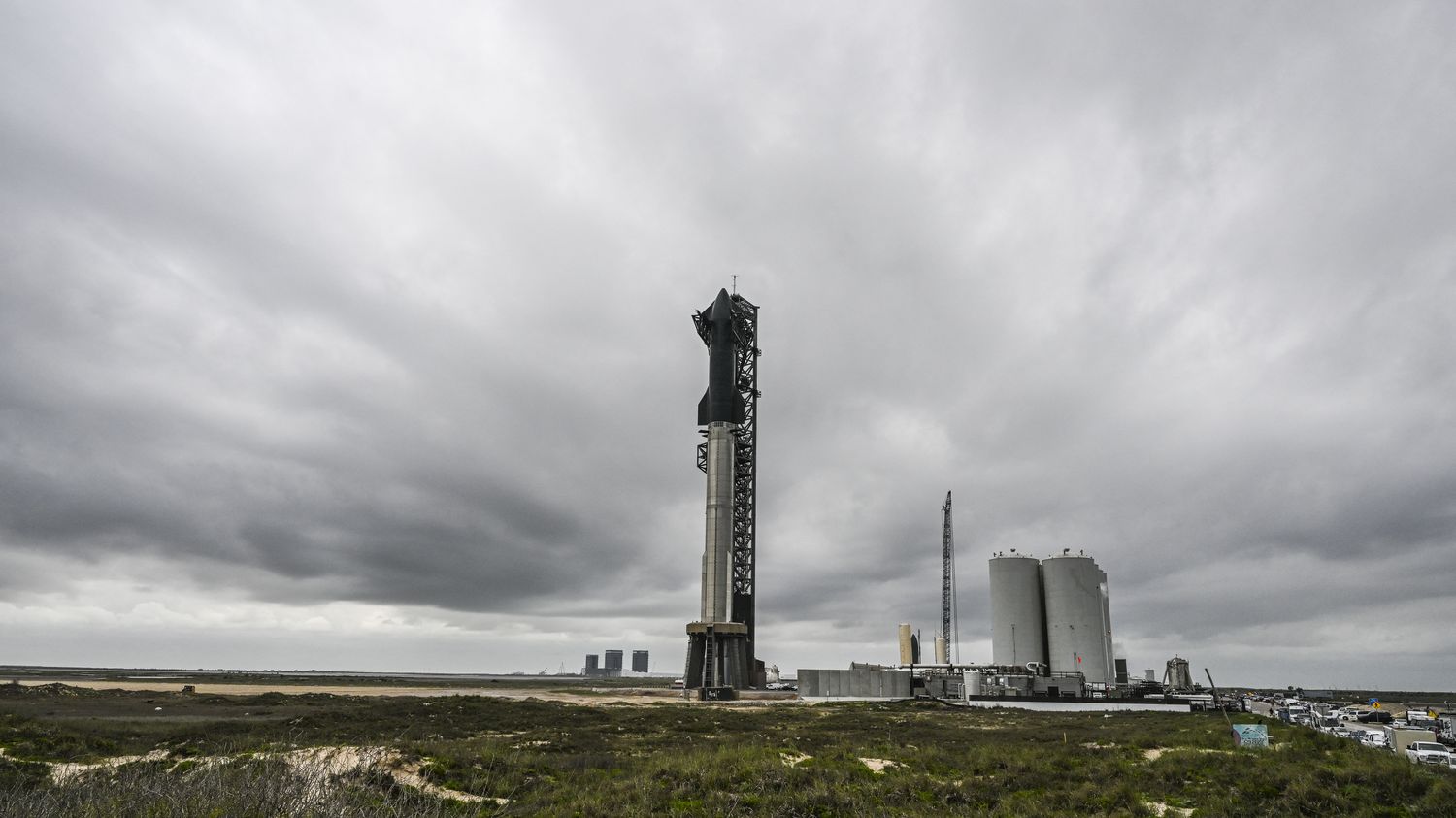
Published
Reading time: 4 min

Billionaire Elon Musk’s XXL launcher, chosen by NASA for its Artemis program, will carry out its third test on Thursday. Thanks to its reusable elements, it could ultimately make it possible to drastically reduce launch costs, opening new horizons for the conquest of space.
Never two without three ? After the semi-failure (or mixed success) of the previous test flight in November, SpaceX returns to the launch pad, Thursday March 14, for a third test of its Starship rocket, with the hope that it does not end in a fireball again. In order to (re)put this launch and this crucial step into perspective and (re)raise the issues, franceinfo explains to you why this machine is so scrutinized and awaited for the conquest of space.
Because NASA is counting on Starship to return to the Moon
Launched in 2022, the ambitious Artemis program led by the American Space Agency (Nasa) continues on its path. The goal is to send humans back to the Moon. But, unlike what was done with the Apollo program in the 1960s and 1970s, the idea is to do it regularly and sustainably, by installing a lunar base. “Artemis is NASA’s flagship program for space exploration”insists to franceinfo Paul Wohrer, specialist in space issues at the French Institute of International Relations (Ifri).
For the moment, three phases are planned. Artemis I, the first stage, corresponds to the sending of the Orion capsule around the Moon, then its return to Earth. It was completed in December 2022. Artemis II must carry four astronauts who will remain in orbit around the Moon before returning to Earth. In January, this stage was postponed from September 2024 to September 2025. Finally, during Artemis III, astronauts will land at the South Pole of the Moon. This last phase should occur in 2026 at the earliest.
The SpaceX rocket is of prime importance for NASA because it has chosen it, from 2021, to take astronauts to the ground of our natural satellite. If the first two flights failed, “key stages” have however been crossed, and there is no doubt that Starship will succeed in flying and resting on Earth without incident, believes Paul Wohrer. The main question is when this will happen.
Because it is the largest and most powerful rocket ever built
At 120 meters high – the equivalent of a thirty-story building – Starship is the tallest rocket ever built. For comparison, Ariane 6, the new European rocket which is due to make its maiden flight between mid-June and the end of July, measures 62 meters.
The phenomenal power of Starship, which carries 33 reactors called Raptor, allows it to carry 100 tons of material into low orbit, five times more than Ariane 5. France 2 presented the gigantic SpaceX rocket on the occasion of its first test flight, in April 2023.
By managing to reuse elements of its rockets, SpaceX is already well ahead of other launchers, notes researcher Paul Wohrer. With the “incomparable and unique abilities” of Starship, Elon Musk’s company will further widen the gap, he emphasizes.
Starship, a space juggernaut, is being carefully scrutinized by the different powers that want to invest in space: historic players, like Europe, or newcomers, like the private Blue Origin companies of American billionaire Jeff Bezos, or countries like China and India. The interest is therefore to observe the performance of the device, but also to confirm SpaceX’s clear advance. But if Starship were to fly, “this does not mean that all other launchers would be obsolete”tempers Paul Wohrer.
Because it could make it possible to (further) reduce the cost of space launches
The launcher market has already been completely shaken up by SpaceX. By reusing elements, the American company has managed to reduce its costs. A launch was estimated at around 150 million dollars (around 137 million euros) for Ariane 5. With a Falcon 9 rocket from SpaceX, whose booster is reusable, the amount is divided by more than two: around 62 million dollars (around 56.7 million euros).
According to Elon Musk, a Starship launch could cost less than $10 million (nearly 9.2 million euros). His estimates must however be taken with caution, warns Paul Wohrer, while insisting on the fact that the rocket promises to be “very economical because it is completely reusable, with the two stages which must be able to return to Earth”. It is still necessary, underlines the specialist, that the maintenance and upkeep costs of the various elements comply with forecasts.
Managing to lower costs so drastically could allow Elon Musk to successfully complete his long-term project with Starship: making humans the first multi-planetary species. Originally, this XXL rocket was imagined by the billionaire with the aim of colonizing other planets.
The Moon is therefore only a preliminary step, before aiming for Mars. Elon Musk does not hide it, he said that he intended to create “a self-sufficient city”and develop a “space civilization”.
